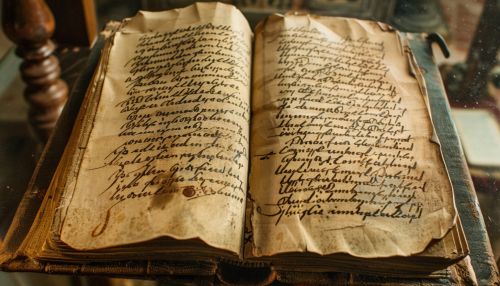Hypatian Codex
Overview
The Hypatian Codex is a medieval manuscript that is of significant importance to the study of early Slavic literature and history. Named after the Hypatian Monastery in Kyiv, where it was discovered, the codex is a compilation of three separate chronicles: the Primary Chronicle, the Kyivan Chronicle, and the Galician-Volhynian Chronicle.


Composition
The Hypatian Codex, also known as the Ipatiev Chronicle, is a composite manuscript. It is comprised of three distinct parts, each representing a different chronicle. These chronicles were not originally created as a single volume, but were later bound together, likely in the 15th century, to form what is now known as the Hypatian Codex.
Primary Chronicle
The first part of the Hypatian Codex is the Primary Chronicle, also known as the Tale of Bygone Years. This is a historical record that covers the period from the earliest times to the year 1110. The original chronicle was likely compiled in the Kyivan Monastery of the Caves around the year 1113, under the supervision of the monk Nestor. The version included in the Hypatian Codex is a copy made in the early 15th century.
Kyivan Chronicle
The second part of the Hypatian Codex is the Kyivan Chronicle. This chronicle is a continuation of the Primary Chronicle and covers the period from 1111 to 1200. The Kyivan Chronicle provides a detailed account of the political, social, and religious developments in Kyivan Rus during this period.
Galician-Volhynian Chronicle
The third and final part of the Hypatian Codex is the Galician-Volhynian Chronicle, which covers the period from 1201 to 1292. This chronicle provides a detailed account of the history of the principalities of Galicia and Volhynia, which were important political entities in the western part of the Kyivan Rus.
Significance
The Hypatian Codex is a key source for the study of early Slavic history and literature. It provides a unique insight into the political, social, and religious life of the Kyivan Rus, as well as the cultural and literary traditions of the time. The codex is particularly valuable for its detailed accounts of the events and personalities of the 12th and 13th centuries.
Preservation and Access
The Hypatian Codex is currently housed in the Russian State Library in Moscow. The manuscript has been digitized and is available for study online. Despite its age and the delicate condition of the parchment, the codex is remarkably well preserved. The text is largely legible, and the manuscript as a whole is in a relatively good state of preservation.
